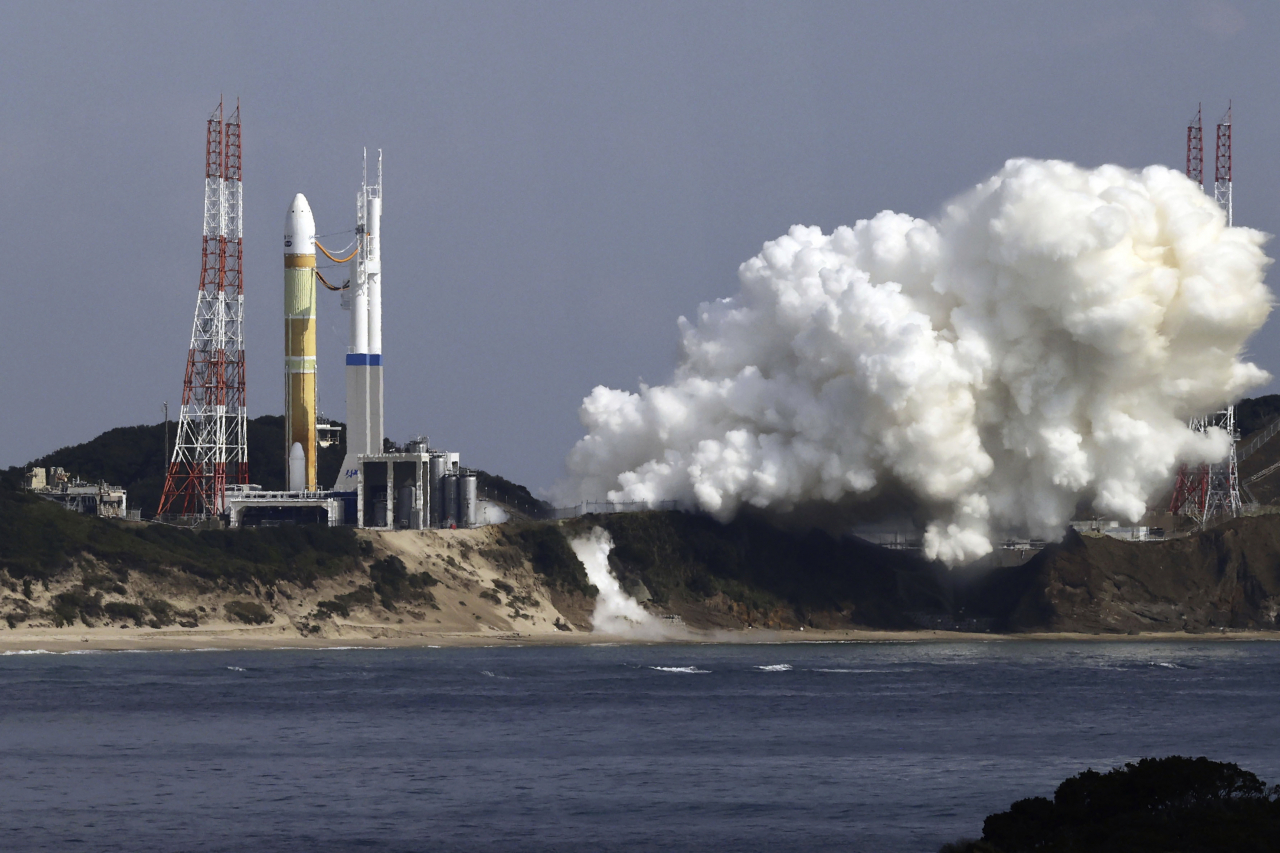 |
An H3 rocket sits on the launch pad at Tanegashima Space Center in Kagoshima, southern Japan Friday, Feb. 17, 2023. Japan’s space agency aborted a planned launch Friday of the first of its new flagship series H3 rocket. (Kyodo News via AP) |
Japan's space agency aborted the inaugural launch of its next-generation H3 rocket on Friday after the auxiliary booster engines failed to ignite, officials said.
The main engine of the rocket, which is carrying an observation satellite and an experimental sensor to detect missile launches, had already ignited when the launch was halted, the Japan Aerospace Exploration Agency said.
“I know many people were waiting for and looking forward to this day. I'm so sorry. We also feel extremely regretful and frustrated,” JAXA project manager Masashi Okada said at a news conference as he wiped away tears.
Okada described it as an aborted launch — not a failure — because it was suspended as a result of safety features that functioned properly.
Still, the unsuccessful launch at the Tanegashima Space Center in southern Japan was a setback for Japan’s space program, which suffered an earlier failed launch in October of a smaller Epsilon-series sold-fueled rocket designed to launch scientific satellites.
The H3 launch had been put off from earlier in the week due to poor weather after more than a two-year postponement from 2020 because of an engine development delay.
The H3 rocket — Japan’s first new series in more than 22 years — was developed at a cost of 200 billion yen ($1.5 billion) by JAXA and Mitsubishi Heavy Industries as a successor to Japan's H-2A rocket, which is due to retire after its upcoming 50th launch.
Okada said the H3's main engine ignited successfully, but the subsequent signal to ignite a pair of auxiliary boosters was not sent after an unidentified abnormality was detected in the process. He said the problem was not related to the engines but was most likely in an electrical system in the first stage.
“We will investigate the cause as soon as possible and do our utmost to try again,” Okada said. He said he hopes the problem can be resolved and another launch attempted before the current launch window closes on March 10.
The rocket is carrying an Advanced Land Observation Satellite tasked primarily with Earth observation and data collection for disaster response and map making, and an experimental infrared sensor developed by the Defense Ministry that can monitor military activity including missile launches.
The H3, about 60 meters (196 feet) long, can carry larger payloads than the 53-meter (174-foot) H-2A. But its launch cost has been slashed approximately in half to about 50 million yen ($371,000) by simplifying its design, manufacturing and operation in an effort to win more commercial launch customers. The hydrogen-fueled main engine is newly developed and uses fewer parts by altering the combustion method.
The space launch business has become increasing competitive, with major players including SpaceX and Arianespace. (AP)





![[Herald Interview] 'Trump will use tariffs as first line of defense for American manufacturing'](http://res.heraldm.com/phpwas/restmb_idxmake.php?idx=644&simg=/content/image/2024/11/26/20241126050017_0.jpg)
![[Exclusive] Hyundai Mobis eyes closer ties with BYD](http://res.heraldm.com/phpwas/restmb_idxmake.php?idx=644&simg=/content/image/2024/11/25/20241125050044_0.jpg)
